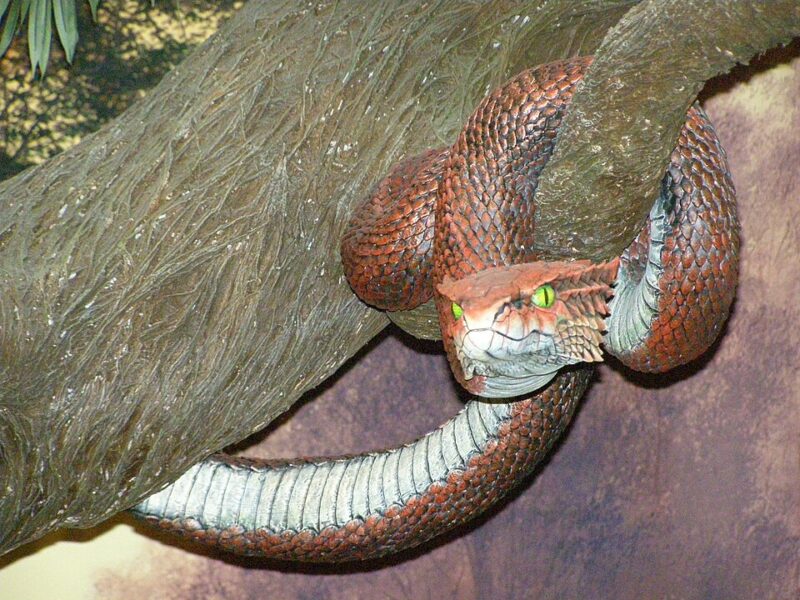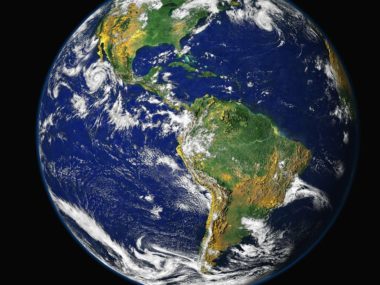Those that champion the Satan Hypothesis (SH) hypothesis typically discuss natural evil in terms of natural disasters like, volcanoes, earthquakes, or tsunamis, but rarely in terms of animal suffering, death, and extinction. Theologian Greg Boyd (2001), theologian/philosopher C.S. Lewis (2001), and philosopher Michael Murray (2008), are among the very few who have attempted to apply the SH hypothesis to the suffering of animals. In The Problem of Pain (2001), for example, Lewis proposes:
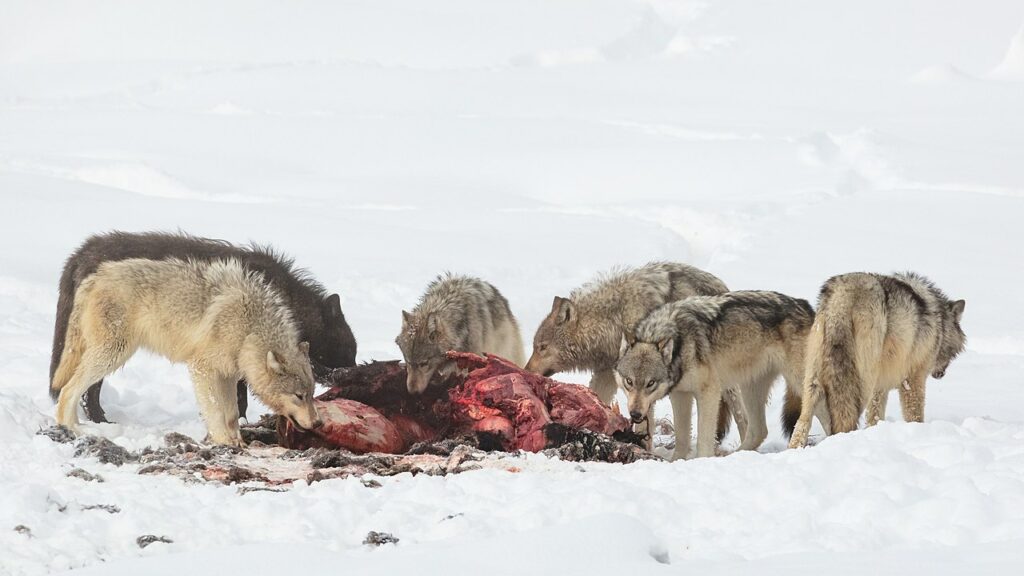
“… that some mighty created power had already been at work for ill on the material universe, or the solar system, or, at least, the planet Earth, before ever man came on the scene … If there is such a power, as I myself believe, it may well have corrupted the animal creation before man appeared. The intrinsic evil of the animal world lies in the fact that animals, or some animals, live by destroying each other. … The Satanic corruption of the beasts would therefore be analogous, in one respect, with the Satanic corruption of man.”
Lewis 2001, p. 86-87
The following article has been reblogged with permission from Creation Unfolding. The views expressed reflect those of the author, and not necessarily those of New Creation.
It is of consequence that Lewis views the predatory destruction of animals by other animals as being intrinsically “evil” and so clearly believed that predatory behavior was “abnormal”—a reflection of the external “corruption” brought about Satanic forces. Although not articulating the full extent of this “corruption,” Lewis does suggest that Satan, after successfully introducing carnivory into the world, succeeded to take advantage of sexual reproduction, magnifying its effects so as to further his agenda of predatory destruction, “But I take the fecundity and the death rate to be correlative phenomena. There was, perhaps, no necessity for such an excess of the sexual impulse: the Lord of this world thought of it as a response to carnivorousness—a double scheme for securing the maximum amount of torture (Lewis 2001, p. 87).” Lewis also alludes to Satan’s power over animal physiology, specifically as it relates to adaptations necessary for predation: “I think the lion, when he has ceased to be dangerous, will still be awful: indeed, that we shall then first see that of which the present fangs and claws are a clumsy, and satanically perverted, imitation (Lewis 2001, p. 92).”
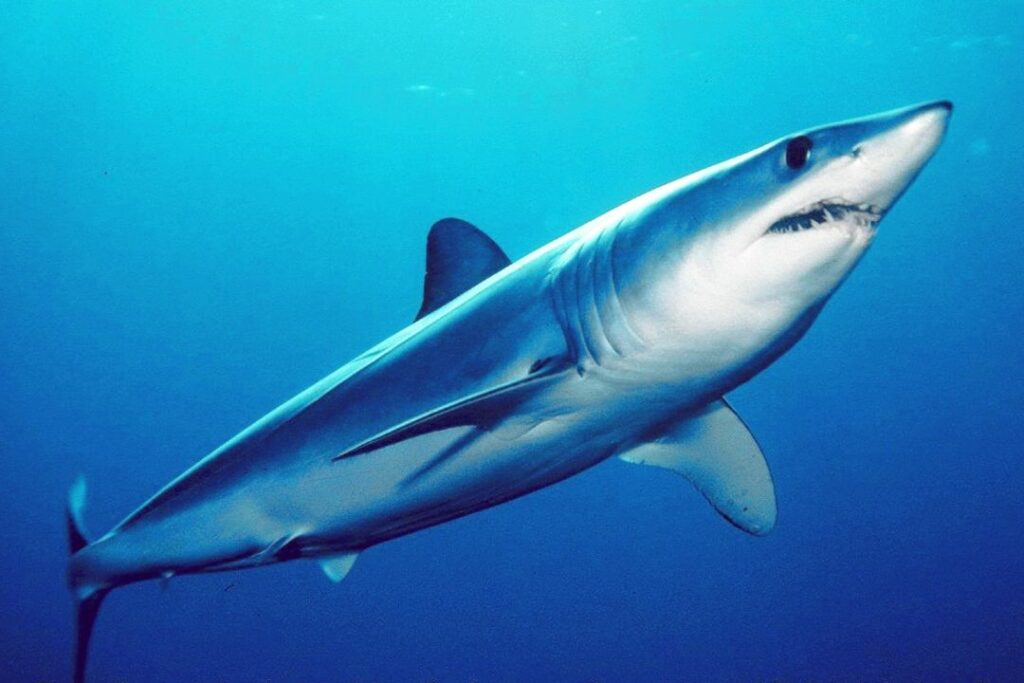
Once again, however, we are immediately drawn to some of the same objections raised above (see part 1). Satan is not the Creator; he is not even a creator in the sense that he can make new things. We do know that Satan is, with God’s permission, able to cause diseases (Job 2:7; Luke 13:10-17) and bring about physiological changes due to demon possession (Mark 5:1-10; Matthew 8:28-34). These, and other similar examples, are often used to justify the SH, especially in the biological realm. This, it would seem, is where Lewis finds justification for Satan’s “corrupting” the animal world. But what is involved in this “corruption”? Biologically speaking, Satan would had to have re-engineered already complex organisms, furnishing them with the physiological adaptations necessary to accomplish quite astonishing, and quite honestly, fascinating, although equally dangerous and often gruesome tasks. Take sharks as an example. Sharks are one of the most efficient killing machines on the planet, meticulously designed, it seems, for the single task of detecting and then killing their prey. Sharks have multiple adaptations that assist it in this task, but perhaps one of the most amazing is their Ampullae of Lorenzini—specially designed rows of electroreceptors found around the jaw that detect electric fields generated by the activities of other fish. These receptors, working in concert with drag-reducing dermal denticles, multiple rows of razor-sharp teeth, and numerous other well-tuned adaptations make sharks formidable predators.
These kinds of highly sophisticated adaptations permeate the biological realm. It is true, these predatory-specific adaptations are aimed at killing other animals, but should we give Satan the credit for what can only be described as biological brilliance? Essentially, and taken to its logical conclusion, Lewis, and other SH proponents, are granting to Satan the entire genetic enterprise involved in biological evolution, from the first supposed cell all the way to modern man. This would include, but is not limited to, the manipulation of the myriads of factors involved in natural selection, mutations, gene flow, and genetic drift. Murray (2008, p. 103), a non-committal SH proponent has anticipated all that is involved:
How much control over the cosmic environment can be ceded depends on what sorts of powers one takes these angelic beings to have. Could these beings, for instance, have exercised control over … the course of natural selection, over the genotype of various organisms or genotypic variation over evolutionary history?
Murray (2008, p. 103)
Yet Scripture is quite clear that it is God who gets the credit for the efficiency and potency of all predatory mechanisms, “The young lions roar for their prey, seeking their food from God” Psalm 104:21 (ESV). The book of Job agrees:
Can you hunt the prey for the lion, or satisfy the appetite of the young lions, when they crouch in their dens or lie in wait in their thicket? Who provides for the raven its prey, when its young ones cry to God for help, and wander about for lack of food?
Job 38:39-41 ESV
Is it at your command that the eagle mounts up and makes his nest on high? On the rock he dwells and makes his home, on the rocky crag and stronghold. From there he spies out the prey; his eyes behold it from far away. His young ones suck up blood, and where the slain are, there is he.
Job 39:27-30 ESV
In Job 39:19-25 (ESV), there is even a remarkable passage on the horse that indirectly attributes micro-evolutionary mechanisms to God:
Do you give the horse its strength or clothe its neck with a flowing mane? Do you make it leap like a locust, striking terror with its proud snorting? It paws fiercely, rejoicing in its strength, and charges into the fray. It laughs at fear, afraid of nothing; it does not shy away from the sword. The quiver rattles against its side, along with the flashing spear and lance. In frenzied excitement it eats up the ground; it cannot stand still when the trumpet sounds. At the blast of the trumpet it snorts, ‘Aha!’ It catches the scent of battle from afar, the shout of commanders and the battle cry.
Job 39:18-25, ESV
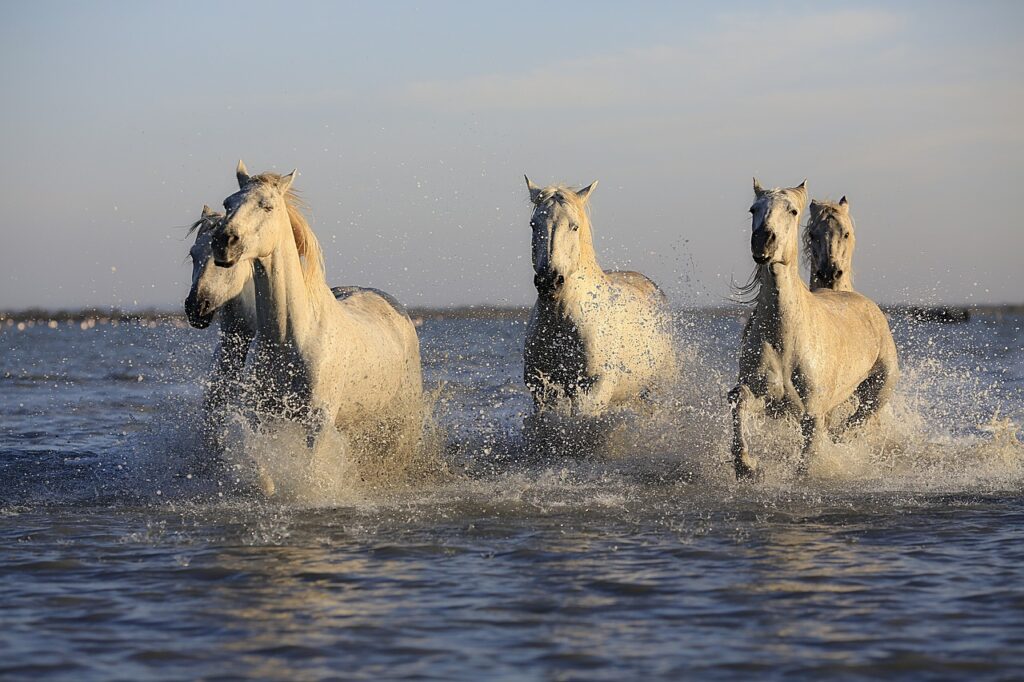
God is here describing a very “modern” horse. Yet all theistic evolutionists, and even many young- and old-age creationists (Cavanaugh et al. 2003) now accept that our modern horse, and the one described here in Job, diversified from a much smaller, and rather humble animal that could never be defined in these terms (Coulson 2023). Exactly “how” the horse diversified into its present state, and over what period this diversification occurred, is unimportant. What matters is that we have here an example of God taking credit for the modern horse’s “fierce,” war-like adaptations by indirectly assuming a created design that came about through mediated genetic changes. God was in control, not Satan.
Some SH proponents have used Hebrews 2:14 and Satan’s power over death as a precedent for furthering SH claims in the biological realm, “Since therefore the children share in flesh and blood, he himself likewise partook of the same things, that through death he might destroy the one who has the power of death, that is, the devil” (Hebrews 2:14 ESV). Murray (2008, p. 101), interprets the earth’s universal “bondage to decay” in Romans 8:18-23 through the lens of Hebrews 2:14, “The one who ‘holds the power of death—that is, the devil’ (Heb. 2:14) exercises a pervasive structural, diabolical influence to the point that the entire creation is in ‘bondage to decay’ (Rom. 8:21).” But Murray has here gone too far. The power (of death), in Hebrews 2:14 has got nothing to do with animal death and suffering. It is a power that rightfully belongs to Satan as the “father” of all sinners (Gen 3:14), exercised by him in the court of heaven to bring condemnation upon his children. It is thus the power of accusation. Jesus Christ released us from that power by taking away our sin. This is what Paul was talking about in Col 2:13-15 (ESV):
And you, who were dead in your trespasses and the uncircumcision of your flesh, God made alive together with him, having forgiven us all our trespasses, by canceling the record of debt that stood against us with its legal demands. This he set aside, nailing it to the cross. He disarmed the rulers and authorities and put them to open shame, by triumphing over them in him (emphasis mine).
Colossians 2:13-15, ESV
Christ “disarmed the rulers and authorities” by taking from Satan the power to accuse sinners and thus condemn them to death. William Lane Craig (1991, p. 61) concurs: “The devil did not possess control over death inherently but gained his power when he seduced humankind to rebel against God.” And this is why the writer to the Hebrews can go on to say that Christ is now able to “deliver all those who through fear of death were subject to lifelong slavery” (Hebrews 2:15 ESV). Hebrews 2:14, then, has nothing to do with an intrinsic power to bring death and suffering to humans, let alone animals. It is a power that is allocated.
Are old-earth creationist SH models any better off than theistic evolutionary ones? Boyd, Lewis, and Murray, are all theistic evolutionists, and would share only certain SH elements with old-earth creationist models. Satanically influenced natural disasters such as tsunamis, earthquakes, and hurricanes, would be common to both groups, while a diabolical model of Darwinian evolution would not (Keathley 2015). Even so, old-earth creationist models supporting the SH would not only suffer the same shortcomings as theistic evolutionary models in relation to Satanically inspired natural disasters, they would fare no better using an old-earth, yet distinctly creationist approach to diabolically induced animal death and suffering. That is because many of the adaptations involved in animal defenses and predatory behavior would still be dependent on powers of Creational ingenuity, a role, that as we have seen above, cannot be biblically ascribed to Satan.
Some other miscellaneous, but entirely appropriate objections have been raised by old-earth creationist William Dembski (2009). Dembski has astutely recognized the problem of justice. Why should animals, for example, suffer for the rebellious Fall of Satan? Satan was not given dominion over the earth, Adam was. As the deputized vice-regent over creation, Adam’s sin and rebellion brought that creation into bondage (Romans 8:18-25). The suffering of animals, although still difficult to understand from a human perspective, is, therefore just in the economy of God. The same cannot be true if Satan is responsible for animal suffering.
We are also told in Genesis 1:31 (ESV) that “God saw everything that he had made, and behold, it was very good” (emphasis mine). How can God call a world full of suffering and pain, where Satan is ravaging both physical and biological systems, “very good”?
In summary, the SH hypothesis suffers from several debilitating flaws that would require a complete and radical departure from even a more liberal approach to theology. Satan does have the power to distort that which God has created, but even this power is not intrinsic to either him or his cohort, being instead a delegated power that is vastly limited, requiring divine permission. Granting Satan access to DNA, and furnishing him and his cohort with the genetic powers of evolution is equally disturbing, since it requires attributing to Satan Creational powers that are rightly reserved for God alone.
Learn More About the Satan Hypothesis
Footnotes:
Boyd, G. 2001. Satan and the problem of evil: constructing a trinitarian warfare theodicy. Downers Grove, IL: InterVarsity Press
Cavanaugh, D.P., Wood, T., and Wise, K.P. 2003. Fossil Equidae: A Monobaraminic, Stratomorphic Series. In Ivey, R.L. (ed.), Proceedings of the Fifth International Conference on Creationism. Creation Science Fellowship, Pittsburgh, Pennsylvania, p. 143-153.
Coulson, K.P. 2023. Answering Answers in Genesis: What is young earth evolution? Accessed 22/03/2023. https://www.creationunfolding.com/post/answering-answers-in-genesis-what-is-young-earth-evolution
Craig, William, Lane. 2009. #113 Animal Suffering. Accessed 05/29/2023. https://www.reasonablefaith.org/writings/question-answer/animal-suffering
Keathley, Kenneth. 2016. Was there animal death before the Fall? Accessed 22/03/22. http://www.theologyforthechurch.com/2015/01/06/was-there-animal-death-before-the-fall/
Lewis, C. S. 1898-1963. 2001. The Problem of Pain. [San Francisco], Harper San Francisco.
Murray, M. 2008. Nature red in tooth & claw. New York, NY: Oxford University Press.

